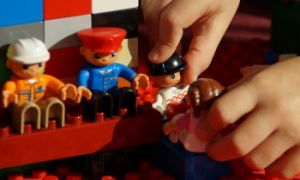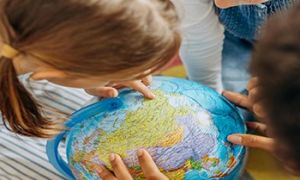The Early Years Learning Framework identifies that positive attitudes and competencies in literacy and numeracy are important aspects
of communication and are vital for children’s successful learning. The indicators have been developed to support teachers to extend and enrich every preschool child’s numeracy and literacy learning. The following article provides information on What Are The Indicators, the Importance of The Indicators, Learning Processes, Numeracy and Literacy Indicators and more.
Numeracy and literacy are described as follows in the national early childhood curriculum Belonging, Being & Becoming: the Early Years Learning Framework (EYLF):
Numeracy is the capacity, confidence and disposition to use mathematics in daily life. Children bring new mathematical understandings
through engaging in problem-solving. It is essential that the mathematical ideas with which young children interact are relevant and
meaningful in the context of their current lives. Spatial sense, structure and pattern, number, measurement, data argumentation,
connections and exploring the world mathematically are the powerful mathematical ideas children need to become numerate. (EYLF p. 38)
Literacy is the capacity, confidence and disposition to use language in all its forms. Literacy incorporates a range of modes of
communication including music, movement, dance, storytelling, visual arts, media and drama, as well as talking, reading and writing.
Contemporary texts include electronic and print-based media. In an increasingly technological world, the ability to critically analyse
texts is a key component of literacy. Children benefit from opportunities to explore their world using technologies and to develop
confidence in using digital media. (EYLF p. 38).
What Are The Indicators
Teachers can use the indicators of preschool reading and numeracy in a continuous cycle to recognise, plan for, evaluate, track, and report on each child's learning and development. The indicators were created to assist instructors in extending and enhancing each preschool child's literacy and numeracy education.
The indicators will help teachers in particular to:
- Recognize and describe children's numeracy and literacy understandings and learning
- Plan for each child's numeracy and literacy learning
- Monitor and assess each child's numeracy and literacy learning
- Identify children at risk in their numeracy and/or literacy learning
- Discuss and document observations of children's literacy and numeracy growth in order to enhance numeracy teaching methods.
Importance Of The Indicators
The indicators of preschool numeracy and literacy:
- are underpinned by the practices, principles and outcomes in Belonging, Being & Becoming
- place the child at the centre as a capable and competent learner
- recognise that all children come to preschool with numeracy and literacy capabilities that they demonstrate in their own unique way
- provide a set of eight critical indicators of learning (four for numeracy and four for literacy)
- identify key learning processes that underpin numeracy and literacy learning » are interconnected and not sequential
- are for teachers to use in a continuous cycle to identify, plan for, assess, monitor and report on each child’s learning and growth
- support teachers to reflect on and improve pedagogy for numeracy and literacy learning
Learning Processes
Learning processes are specific learning behaviours that facilitate children’s numeracy and literacy learning. The indicators of both preschool numeracy and literacy:
- The circle just outside the centre is marked by learning processes.
- The learning processes are interconnected
- The learning processes related to all four numeracy/literacy indicators
In the numeracy chart, the learning processes include:
- Noticing
- Sorting
- Patterning
- Wondering
- Communicating
- Reasoning
- Generalising
- Visualising
- Comparing
In the literacy chart, the learning processes include:
- Communicating
- Creating and making meaning
- Encoding and decoding
- Reflecting critically
Numeracy and Literacy Indicators
These describe how a child sees, interacts with and explores their world. The indicators describe the child being and becoming numerate and literate. The indicators are not to be thought of as a list of teachable items that require children to be removed from the everyday learning environment; instead, they are conceptual, behavioural and interconnected pointers that are observable in the day-to-day learning context of a preschool.
Numeracy indicators include:
- I explore and understand my place and space in the world
- I measure and compare my world
- I analyse, read and organise the data in my world
- I quantify my world
Literacy indicators include:
- I use language to connect with my world
- I understand the language of my world
- I engage with texts and make meaning
- I represent my world symbolically
Key Elements
These elaborate on each indicator and provide broad observable outcomes within the preschool context. They guide teachers in their observations and decisions about children’s numeracy and literacy understandings and learning. The key elements are interconnected and relate to each other in multiple ways.
Numeracy Key Elements (under appropriate Indicator) include:
I explore and understand my place and space in the world
- Use properties of shape to make things fit, balance and transform
- Use the position location, arrangement and movement of myself, others and objects Purpose
- Notice 2D aspects of 3D objects
I measure and compare my world
- Notice objects, events and space have measurable attributes
- Use measurement to compare objects, events and space
- Recognise that the principles of measurement do not change
- Choose and use the appropriate tool and strategy for the attribute
- Use comparative language
I analyse, read and organise the data in my world
- Notice and use likelihood in my everyday routine
- Interpret and use data to make decisions
- Collect, sort and organise data
- Use data as part of my everyday routine
I quantify my world
- Notice quantity as an attribute
- Divide or combine quantities to form new quantities
- Use the standard number system
- Use quantification to describe and compare
Literacy Key Elements (under appropriate Indicator) include:
I use language to connect with my world
- Maintain a reciprocal shared conversation
- Describe experiences and express ideas
- Use increasingly sophisticated language to connect and communicate
- Use language appropriate to the purpose
I understand the language of my world
- Respond to sounds and patterns in speech and stories
- Demonstrate a critical understanding of texts
- Understand what has been communicated
- Actively inquire to make meaning
I engage with texts and make meaning
- Choose texts for particular purposes
- Respond meaningfully to symbols and texts
- Understand that texts convey meaning
- Infer meaning from familiar texts
I represent my world symbolically
- Represent ideas and theories in multiple ways
- Use a range of symbols to convey meanings
- Create texts for a range of purposes
- Understand conventions of texts
It is important for educators to note that since each child has a unique learning trajectory, learners may demonstrate their knowledge of indicators and key elements in different though equally meaningful ways.
How To Use The Indicators
The indicators are used by teachers to organise and plan to learn. The indications give teachers a point of focus for their observations. They aid educators in understanding how early children acquire knowledge, abilities, attitudes, and behaviours in literacy and numeracy.
The indicators help teachers:
- create learning environments that intentionally foster children's development of numeracy and literacy understandings;
- plan for and construct learning experiences that are relevant to the children in their local context;
- plan for individual children, for small groups of children, and for the entire group of children;
- recognise and make plans for children who may be disengaging from learning or who are not making progress;
- develop individual learning goals for each child; reevaluate and enhance
How The Indicators Support Educators
- The indicators aid educators in creating a common language for discussing how kids acquire numeracy and literacy skills in a preschool setting. They aid educators in concentrating their observations and determining how the kids in their care demonstrate and improve literacy and numeracy abilities, knowledge, and comprehension in their environment.
- The indicators assist teachers in gathering data that demonstrates children's learning progress. The indicators can be used in a variety of ways by teachers to demonstrate a student's progress. Children's familiar environments must be used to collect evidence of their understandings, abilities, and dispositions across time.
- The indicators will be used by teachers to help them report on the learning of the students.
- Teachers and other professionals can communicate children's strengths and make plans for their continuous learning with the help of the data supplied in individual education learning plans, negotiated education plans, and the Statement of Learning.
- Each child's Statement of Learning will incorporate the data gathered utilising the indicators. The Early Years Learning Framework will still be used as a guide for writing the Statement of Learning.
- Teachers choose the kind of evidence of improvement they will gather based on their professional judgement. For instance, they might decide to specify the learning process.
Collecting Evidence and Showing Progress
Teachers choose the kind of evidence of improvement they will gather based on their professional judgement. For instance, they may decide to pinpoint a child's learning processes or to pinpoint a child's learning in reference to a specific indicator or essential component.
- There are numerous approaches to gather proof of kids' developing literacy and numeracy skills.
- There are numerous ways to document learning progress and understanding, and the site will specify which methods will be used.
- decision. Written observations, annotated photos, and learning logs are examples of documented evidence that shows learning development.
- Reports, exhibits, bulletins, jottings, observations, and referral notes. Learning evidence can be documented for an individual, both at the small- and large-group levels.
Reference:
Implementation Guidelines For Indicators Of Preschool Numeracy and Literacy, Department Of Education


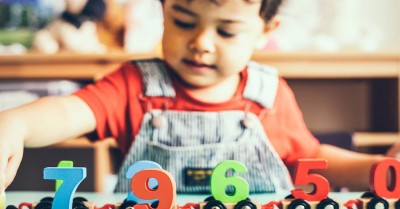
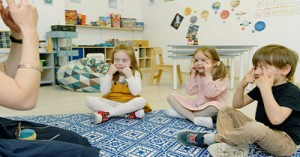
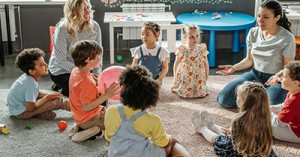
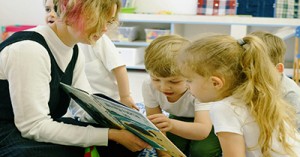

 Here is the list of the EYLF Learning Outcomes that you can use as a guide or reference for your documentation and planning. The EYLF
Here is the list of the EYLF Learning Outcomes that you can use as a guide or reference for your documentation and planning. The EYLF The EYLF is a guide which consists of Principles, Practices and 5 main Learning Outcomes along with each of their sub outcomes, based on identity,
The EYLF is a guide which consists of Principles, Practices and 5 main Learning Outcomes along with each of their sub outcomes, based on identity, This is a guide on How to Write a Learning Story. It provides information on What Is A Learning Story, Writing A Learning Story, Sample
This is a guide on How to Write a Learning Story. It provides information on What Is A Learning Story, Writing A Learning Story, Sample One of the most important types of documentation methods that educators needs to be familiar with are “observations”. Observations are crucial for all early childhood
One of the most important types of documentation methods that educators needs to be familiar with are “observations”. Observations are crucial for all early childhood To support children achieve learning outcomes from the EYLF Framework, the following list gives educators examples of how to promote children's learning in each individual
To support children achieve learning outcomes from the EYLF Framework, the following list gives educators examples of how to promote children's learning in each individual Reflective practice is learning from everyday situations and issues and concerns that arise which form part of our daily routine while working in an early
Reflective practice is learning from everyday situations and issues and concerns that arise which form part of our daily routine while working in an early Within Australia, Programming and Planning is reflected and supported by the Early Years Learning Framework. Educators within early childhood settings, use the EYLF to guide
Within Australia, Programming and Planning is reflected and supported by the Early Years Learning Framework. Educators within early childhood settings, use the EYLF to guide When observing children, it's important that we use a range of different observation methods from running records, learning stories to photographs and work samples. Using
When observing children, it's important that we use a range of different observation methods from running records, learning stories to photographs and work samples. Using This is a guide for educators on what to observe under each sub learning outcome from the EYLF Framework, when a child is engaged in
This is a guide for educators on what to observe under each sub learning outcome from the EYLF Framework, when a child is engaged in The Early Years Learning Framework describes the curriculum as “all the interactions, experiences, activities, routines and events, planned and unplanned, that occur in an environment
The Early Years Learning Framework describes the curriculum as “all the interactions, experiences, activities, routines and events, planned and unplanned, that occur in an environment
